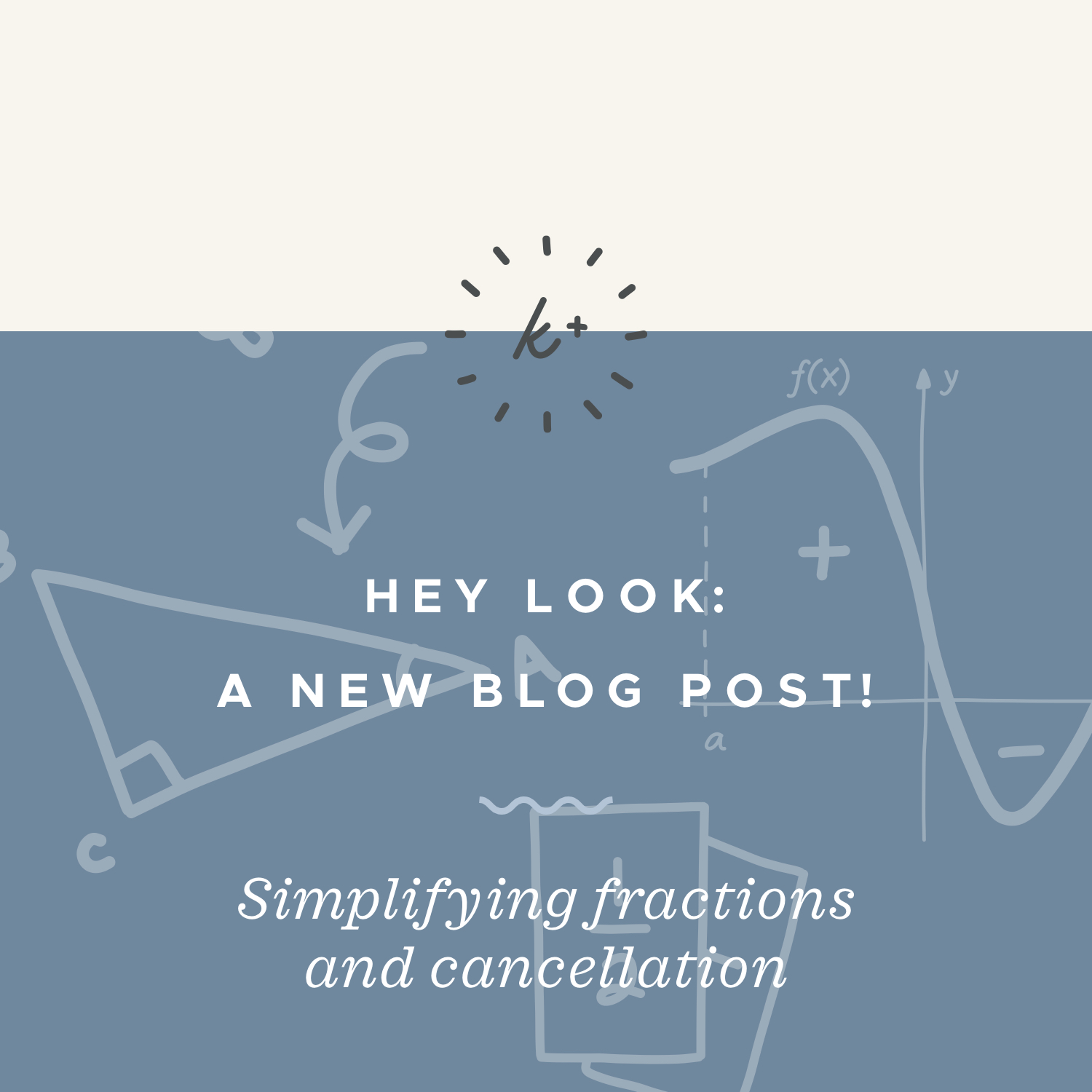How to simplify fractions by cancelling common factors
Why cancelling lets us simplify fractions
We already understand that a fraction just represents “part of a whole”. If a baseball player gets three “at bats” in a game (gets an opportunity as a hitter three times), and out of those three chances they get a hit two times, then their success rate for that game is
???\frac{2\text{ hits}}{3\text{ chances}}=\frac23???
Or if I borrow five books from the library but read only two of them, then I’ve read two out of five books, or
???\frac{2\text{ books read}}{5\text{ books total}}=\frac25???
Hi! I'm krista.
I create online courses to help you rock your math class. Read more.
What we want to be able to do now is learn to simplify fractions. For example, we know that ???50??? is half of ???100???, so if we see the fraction
???\frac{50}{100}???
then we want to be able to rewrite that as
???\frac12???
Because remember, a fraction is really just a relationship between the numerator and the denominator. If I’m driving ???100??? miles to visit my family, and I’ve already driven ???50??? miles, then I know that I’m halfway there. It would be simpler for me to express my progress as ???1/2??? than as ???50/100???, so we want to know how we go about changing ???50/100??? into ???1/2???.
The reason we want to reduce fractions to lowest terms is that even though a fraction like
???\frac{630}{945}???
is actually the same as
???\frac23???,
that isn’t obvious to us when we look at it since the numbers are so big. But if we simplify that larger fraction down to ???2/3???, then we’ll be able to easily tell that we have “???2??? out of ???3??? parts.”
How to simplify fractions by cancelling common factors from the numerator and denominator
Take the course
Want to learn more about Pre-Algebra? I have a step-by-step course for that. :)
Simplifying a fraction to its lowest terms
Example
Simplify the fraction to lowest terms.
???\frac{630}{945}???
There are a couple ways to tackle this, but here’s a reliable way to go about simplifying a fraction to lowest terms. We can first find the prime factorizations of the numerator and the denominator.
What we get is
???\frac{630}{945}=\frac{3\cdot3\cdot5\cdot7\cdot2}{3\cdot3\cdot5\cdot7\cdot3}???
Now we’ll group together the factors that are common to the numerator and denominator, so our fraction can be expressed like this:
???\frac{630}{945}=\frac{\left(3\cdot3\cdot5\cdot7\right)\cdot2}{\left(3\cdot3\cdot5\cdot7\right)\cdot3}???
Because remember, a fraction is really just a relationship between the numerator and the denominator.
What we want to remember at this point is that whenever a factor is common to the numerator and denominator of a fraction, that factor in the numerator “cancels against” the matching factor in the denominator. (It’s as if that factor just disappears from both places.) However, if the numerator is equal to the denominator, the fraction doesn’t disappear (we have to have something there), so the fraction simplifies to ???1???. For example,
???\frac33=1???
???\frac{10}{10}=1???
???\frac{67}{67}=1???
Getting back to our problem, the numerator isn’t equal to the denominator, but the factors in ???(3\cdot3\cdot5\cdot7)??? occur in both of them, so those factors cancel and we’re left with just ???2/3???.
???\frac{630}{945}=\frac{\left(3\cdot3\cdot5\cdot7\right)\cdot2}{\left(3\cdot3\cdot5\cdot7\right)\cdot3}=\frac{2}{3}???
Therefore, because we were able to cancel all those common factors, we can say that
???\frac{630}{945}=\frac23???







